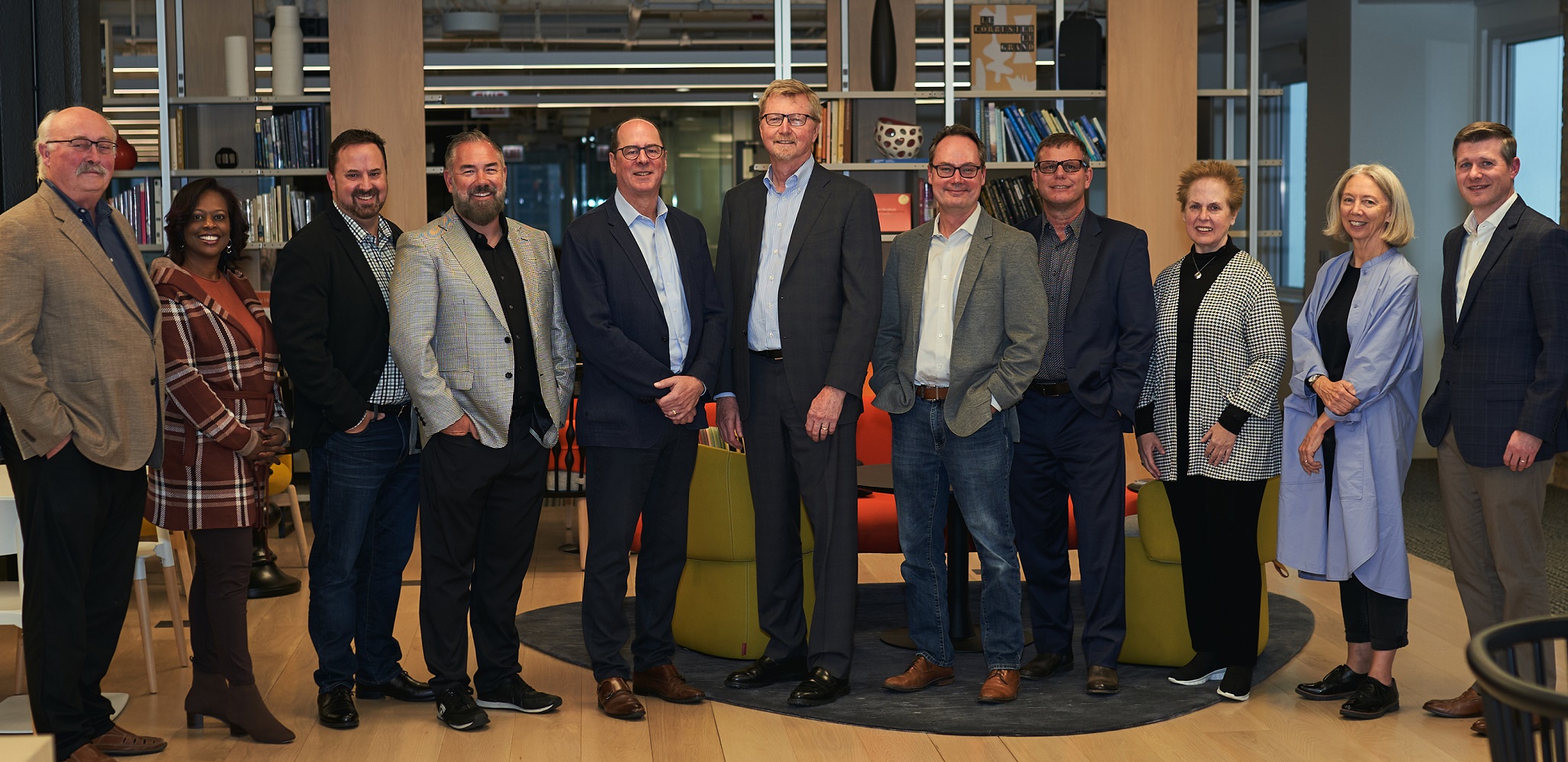Woolpert has acquired Sheehan Nagle Hartray Architects, a full-service architecture firm that specializes in mission critical and technically challenging projects, interior design and predesign services for commercial, civic and education clients. SNHA has offices in Chicago and London.
Principal Neil Sheehan said SNHA wanted to join a nimble, entrepreneurial culture with whom they could develop a visionary, global business strategy. He said in Woolpert, SNHA found transparency and knowledge-sharing across all levels, with clear aspirations for future growth, productivity and success.
“Woolpert shares our drive for design excellence and understands that innovation is evolutionary, while providing services that complement our own,” Sheehan said. “In addition, Woolpert’s geospatial and engineering capabilities underscore our expertise, allowing us to integrate emerging technologies like computational design, digital twins, reality capture, carbon tracking, and virtual and augmented reality.”
Woolpert Vice President and Buildings Sector Leader Suzette Stoler lauded the SNHA staff for their passion, integrity and advancement of next-level, sustainable design.
“We admire what SNHA has accomplished over the last 50 years and are thrilled that they are part of our Woolpert family,” Stoler said. “Together we will enhance our dynamic design culture across the globe, while providing meaningful and sustainable solutions for our clients and the industry.”
“In addition to industry leadership in data center design, SNHA marks another key milestone in our global expansion plan,” Woolpert CEO Scott Cattran said. “With existing Woolpert offices already in North America, Africa, Australia and Asia, SNHA expands our design excellence in Europe and extends our capabilities as a global company.”
AEC Advisors initiated this transaction and acted as a financial advisor to Sheehan Nagle Hartray Architects.
Related Stories
| Nov 27, 2013
Exclusive survey: Revenues increased at nearly half of AEC firms in 2013
Forty-six percent of the respondents to an exclusive BD+C survey of AEC professionals reported that revenues had increased this year compared to 2012, with another 24.2% saying cash flow had stayed the same.
| Nov 27, 2013
Wonder walls: 13 choices for the building envelope
BD+C editors present a roundup of the latest technologies and applications in exterior wall systems, from a tapered metal wall installation in Oklahoma to a textured precast concrete solution in North Carolina.
| Nov 27, 2013
University reconstruction projects: The 5 keys to success
This AIA CES Discovery course discusses the environmental, economic, and market pressures affecting facility planning for universities and colleges, and outlines current approaches to renovations for critical academic spaces.
| Nov 26, 2013
7 ways to make your firm more successful
Like all professional services businesses, AEC firms are challenged to effectively manage people. And even though people can be rather unpredictable, a firm’s success doesn’t have to be. Here are seven ways to make your firm more successful in the face of market variability and uncertainty.
| Nov 26, 2013
Design-build downsized: Applying the design-build method in an era of smaller projects
Any project can benefit from the collaborative spirit and cooperative relationships embodied by design-build. But is there a point of diminishing return where the design-build project delivery model just doesn't make sense for small projects? Design-build expert Lisa Cooley debates the issue.
| Nov 25, 2013
Electronic plan review: Coming soon to a city near you?
With all the effort AEC professionals put into leveraging technology to communicate digitally on projects, it is a shame that there is often one major road block that becomes the paper in their otherwise “paperless” project: the local city planning and permitting department.
| Nov 22, 2013
Kieran Timberlake, PE International develop BIM tool for green building life cycle assessment
Kieran Timberlake and PE International have developed Tally, an analysis tool to help BIM users keep better score of their projects’ complete environmental footprints.
| Nov 20, 2013
Architecture Billings Index slows in October; project inquiries stay strong
Following three months of accelerating demand for design services, the Architecture Billings Index reflected a somewhat slower pace of growth in October. The October ABI score was 51.6, down from a mark of 54.3 in September.
| Nov 19, 2013
Pediatric design in an adult hospital setting
Freestanding pediatric facilities have operational and physical characteristics that differ from those of adult facilities.
| Nov 18, 2013
6 checkpoints when designing a pediatric healthcare unit
As more time and money is devoted to neonatal and pediatric research, evidence-based design is playing an increasingly crucial role in the development of healthcare facilities for children. Here are six important factors AEC firms should consider when designing pediatric healthcare facilities.
















